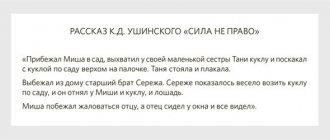It is possible and it is not possible
Sources of protein - the building material for a rapidly growing body - are meat, eggs, cottage cheese and fish
.
For feeding preschoolers, the best meats are considered to be lean veal, chicken, and turkey
.
The most preferable fish are cod, pike perch, pollock, hake, navaga and pink salmon
.
Delicacies, smoked meats, caviar and other “holiday” dishes are best served on holidays - they irritate the mucous membrane of the stomach and intestines, and are not of great value. Contrary to popular belief, fried foods can be given to young children, although it is better to give preference to boiled or stewed foods
. Cutlets and meatballs can be fried, but not too much - the fat in which they are fried can cause heartburn. It is much better to cook them steamed or in sauce.
This is not the first time they have changed
Before Elena Zelenskaya and Evgeniy Klopotenko decided to redesign the children's menu, the nutrition of children in kindergartens in Ukraine was regulated by the interdepartmental instruction “Organization of nutrition for children in preschool institutions,” approved by the Ministry of Health of Ukraine and the Ministry of Education of Ukraine in 1993. The distribution of food by calorie content throughout the day should be as follows: breakfast - 25%, lunch - 35%, afternoon snack and dinner - 20% each.
According to these instructions, it is recommended to correctly combine foods and dishes at each meal. So, if you give pickle soup, vegetable soups or borscht for lunch, then for the second you should serve a side dish of cereals, pasta, a combined side dish, as well as a vegetable salad or vegetables. If cereal soups are prepared for the first course, then it is recommended to serve vegetable dishes as a side dish for the second course. Before lunch, it is advisable for children to eat fresh vegetables or pickles (carrots, onions, garlic, tomatoes, cucumbers) in the amount of 10-50 grams, which should help increase appetite and better absorption of food.
The recommendations were quite extensive. Later, this instruction was modified several times, for example, in 2004. But besides this, changes were made from year to year - for example, the portions increased. According to the new standards, which were adopted in December 2022, they have also changed, and some products have completely disappeared from the list, such as suneli hops. And they also changed in quantity, which also needs to be taken into account.
As Lyubov Khudan, a cook from a kindergarten in the Khmelnytsky region, admitted to Vesti, their menu has become more varied since the new year. If previously they only made fried or stewed fish, today they prepare fish sticks stuffed with eggs, fish soufflé and bread, which children eat with pleasure. Although they admit that they refuse to eat millet porridge with apples and raisins or a salad of carrots, apples and hard cheese. Along the way, the problem is how the menu in kindergartens is compiled.
After the outcry on social networks, the directors of kindergartens contacted by Vesti refuse to talk about nutrition reform. But they say district officials insist on strict compliance with the new rules. But the leadership of regional education departments indicates that they cannot do otherwise. But since a lot of complaints about the food came from parents, they organized inspections to get to the bottom of the problem. And perhaps the menu will be improved. They don’t promise to return to the old ways, but they guarantee that they will select something that the children will eat with great appetite. For this purpose, inspections of kindergarten catering units are organized almost everywhere.
What and how much
Every day the child should receive milk and dairy products - kefir, fermented baked milk, low-fat cottage cheese and yogurt
.
They can be prepared for breakfast, afternoon snack or dinner, used both in their natural form and in casseroles, sandwiches and desserts. Vegetables, fruits and juices made from them
are also required daily for preschoolers. For adequate nutrition, a preschooler needs 150-200 g of potatoes and 200-250 g of other vegetables per day. These include radishes, lettuce, cabbage, cucumbers, tomatoes and herbs. You also need a lot of fruits and berries - 200-300 g fresh, plus juices and nectars. Fresh vegetables and fruits are the main source of vitamins for a child. In addition to meat and vegetables, children need bread and pasta made from durum wheat, as well as fats in the form of butter and vegetable oils.
New, unusual, inedible
Not only schools began to have new dishes from the beginning of the year, but also in budget kindergartens.
“The idea is this: children eat healthy food in kindergarten, then at school, and then they themselves will cook healthy food for themselves, and then for their children and grandchildren. We removed some spices from the school (for example, suneli hops) and reduced the amount of products used. Small children need to be given milk five times a day, so we added more milk and different variations of dishes with milk,” says chef Klopotenko.
According to the plan, the diet of schoolchildren and kindergarten students should include more meat and vegetables. At the same time, there will be less bread, as well as salt and sugar, and there will be no harmful foods. Food products that can be used for catering in gardens are approved in Appendix 2 of the Cabinet of Ministers resolution “On approval of nutrition standards in educational and health institutions.”
For kindergartens, it is prohibited to order and use waterfowl meat and eggs, meat that has not passed veterinary control, meat trimmings, offal - blood, lungs, kidneys, heads, etc., with the exception of liver and tongue. Also prohibited are fatty pork, pork tanks, river and smoked fish, mushrooms, sauces, pepper, mayonnaise, deep-fried products, instant food products, carbonated drinks, kvass, natural coffee, cream products, creamy vegetable oils and oils with the addition of any then other raw materials - fish, seafood, etc. It is prohibited to use products containing synthetic dyes, flavors, sweeteners, flavor enhancers, preservatives. Although no one prohibits canned fish and meat.
Expand
Nutrition standards
We follow the regime
For a child to eat well, food must be enjoyable
.
Cabbage and porridge cause no less joy than a piece of pie, if both are equally tasty and beautiful. Children love interestingly designed dishes made from a variety of products. In addition, it is very important to follow a dietary regime
.
If a child eats too rarely, at large intervals, his mental and physical abilities are reduced from hunger, and the desire to eat more can become a bad habit. If a child eats too often, his appetite worsens and he does not have time to get hungry. The optimal regimen
is considered to be four meals a day: breakfast, lunch, afternoon snack and dinner.
The calorie content of meals should be distributed as follows: 25 percent of the daily value is for breakfast, 40 percent for lunch, 15 percent for afternoon snack and 20 percent for dinner. A child attending kindergarten
most often eats there three out of four times. At home he only gets dinner. It makes sense for parents to take a copy of the weekly menu from the garden so as not to cook for dinner what the child has already eaten that day. It is also worth considering that not all foods need to be given to children every day. So, the list of products for every day includes milk, butter, bread, meat and fruits. But it is enough to get fish, eggs, sour cream and hard cheese once every two to three days.
Nutritionist's opinion
According to nutritionist Anna Sidoruk, the best breakfast for a child is porridge, cottage cheese or vegetable casserole, cheesecakes, and omelet. Tea or cocoa, with a moderate amount of sugar or cocoa. It is important to alternate breakfasts, in which the emphasis is either on proteins or carbohydrates.
“When developing a menu, it is necessary to take into account the physiological characteristics of each pupil. But it’s better to start lunch with 50-70 grams of fresh vegetable salad dressed with vegetable oil. Soups should be alternated; they can be repeated every two weeks. It’s right that pickle and soups with a lot of spices were excluded from the menu. In kindergartens for children, it is preferable to make meatballs, zrazy and goulash for the second course. Meat generally should be stewed or baked. The best side dish for meat is buckwheat or rice. It is recommended to combine fish with mashed potatoes. Casseroles are great for serving as a second course. Drinks – natural juices, compotes and jelly. For an afternoon snack, children would ideally have a baked apple, cottage cheese products if they didn’t have it for breakfast, or a rice casserole with fruit sauce. I would not recommend completely eliminating salt and sugar. But I would recommend drinking more water. In my opinion, today it is possible to develop a universal menu for preschoolers, if, of course, the necessary good quality products are available,” nutritionist Anna Sidoruk emphasized in a conversation with Vesti.
The material was published in the Vesti newspaper dated January 24, No. 007. You can purchase the full issue of the Vesti newspaper at press distribution outlets or subscribe online.
Desires and security
Young children should prepare food in a way that is safe for them to eat. A baby can choke on a piece of meat, so it is better to cook it by first chopping it or grinding it into minced meat. Vegetables can be boiled and chopped, and prepared into casseroles, cutlets or pancakes. When cooking fish, you need to carefully select all the bones so that the baby does not choke. What to do if the child does not want
to eat certain foods?
First, try to find out why he doesn't want to eat them. Before offering food to your baby, try it yourself. Perhaps he just doesn't find it tasty. Change the recipe, add something else to the product, or, conversely, add it to some other dish. Do not force
your child to eat by persuasion, let alone threats - this can only achieve complete disgust.






